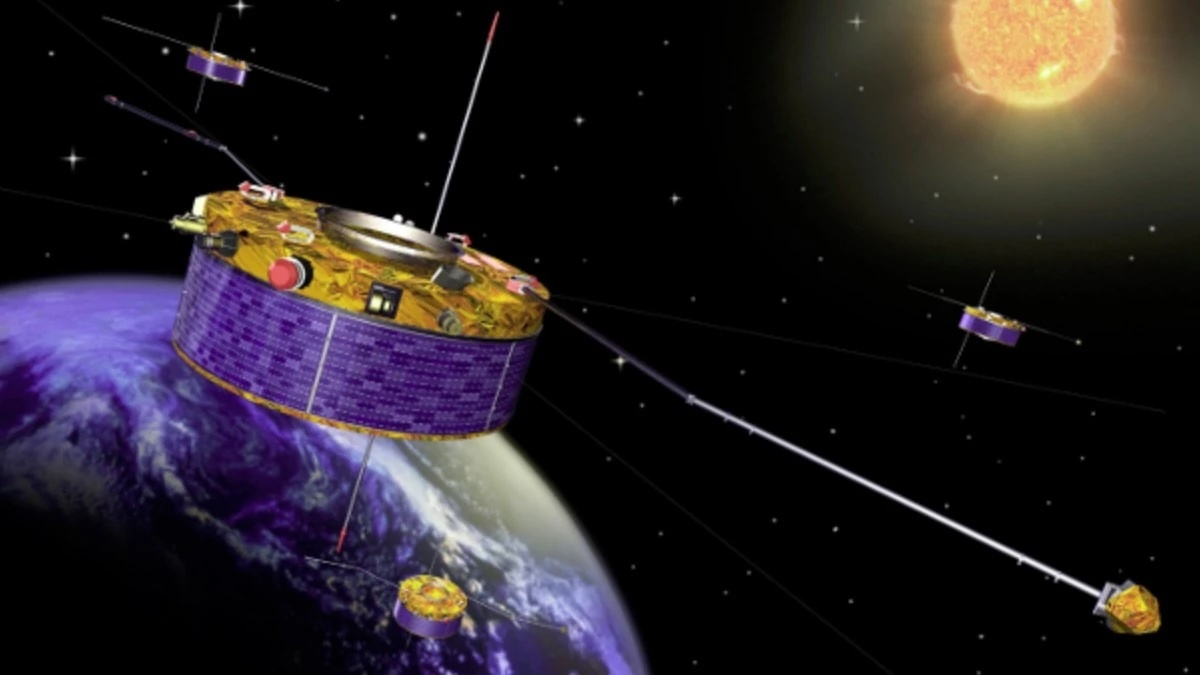14.10.2025
ESA is preparing the second targeted atmospheric reentry of its long-running Cluster mission, with the spacecraft Rumba expected to descend into Earth’s atmosphere over a remote region of the South Pacific Ocean on October 22, 2025. The maneuver will follow the first controlled reentry of Salsa in September 2024 and continues ESA’s program to end the 24-year mission through precise, safe disposal of each satellite.

The European Space Agency’s (ESA) Cluster mission, launched in 2000 to study interactions between the solar wind and Earth’s magnetosphere, is approaching its second planned end-of-life operation as the spacecraft Rumba prepares for a targeted atmospheric reentry between 16:20 and 19:45 UTC on October 22, 2025.
Mission operators at the European Space Operations Centre (ESOC) adjusted the satellite’s orbit to establish a trajectory that will bring it down over an uninhabited area of the South Pacific Ocean, minimizing risk to populated regions.
The technique, introduced with Salsa’s descent on September 8, 2024, allows controllers to determine both the timing and geographic corridor of reentry. Salsa’s operation, completed at 18:47 UTC, was the first fully targeted reentry of an ESA science satellite. Its predictability made it possible to mount an airborne observation campaign from research aircraft, recording infrared and optical data of the breakup process.
Targeted reentry differs from natural orbital decay, which leaves timing and location largely uncertain. By steering a satellite to reenter over a defined region, ESA gains both safety and scientific value, enabling coordinated observation and data collection.
Data from Salsa’s reentry and forthcoming observations of Rumba will support ESA’s Space Debris Office in refining models of fragmentation altitude, thermal emission, and survivability of components during atmospheric breakup. Because all four Cluster spacecraft (Salsa, Rumba, Samba, and Tango) are structurally identical and operate in highly elliptical orbits, their sequential reentries under varying solar and geomagnetic conditions will provide a unique comparative dataset for reentry-physics validation.
Precision operations also represent ESA’s practical implementation of its broader debris-mitigation objectives, designed to exceed existing international standards by ensuring a controlled and predictable mission end for every large spacecraft.
Following Rumba, the remaining satellites Samba and Tango are planned to complete their own targeted reentries during 2026, each directed toward a remote area of the South Pacific. The exact dates will depend on orbital dynamics and operational readiness.
ESA’s Cluster mission fundamentally changed how scientists understand the region where Earth’s magnetic field meets the solar wind. Four identical spacecraft flew in a precise tetrahedral formation, allowing simultaneous three-dimensional measurements of magnetic and electric fields, plasma density, and energetic particles. This configuration made it possible to observe short-lived and small-scale processes in space that single satellites could not resolve.
Through 24 years of continuous observations, Cluster revealed the detailed mechanisms of magnetic reconnection, the process by which magnetic field lines break and reconnect, releasing vast amounts of energy and accelerating charged particles.
It clarified how these processes drive auroral displays and transfer solar wind energy into Earth’s magnetosphere. The mission also mapped the bow shock and magnetopause, the boundaries that protect Earth from the solar wind, and showed how they deform and oscillate under varying solar conditions.
The long lifespan of the mission provided the first opportunity to monitor these interactions across multiple solar cycles. This continuous record allowed scientists to study how geomagnetic storms evolve and how turbulence develops in the magnetotail, improving models used to forecast space weather.
Cluster’s data, now archived at ESA’s Cluster Science Archive, remain a main reference for magnetospheric research and continue to support new missions such as NASA’s Magnetospheric Multiscale Mission.
Cluster demonstrated precise orbital control and formation flying in highly elliptical orbits extending to about 120 000 km (74 500 miles), setting operational standards for future multi-spacecraft missions.
Quelle: The Watchers
